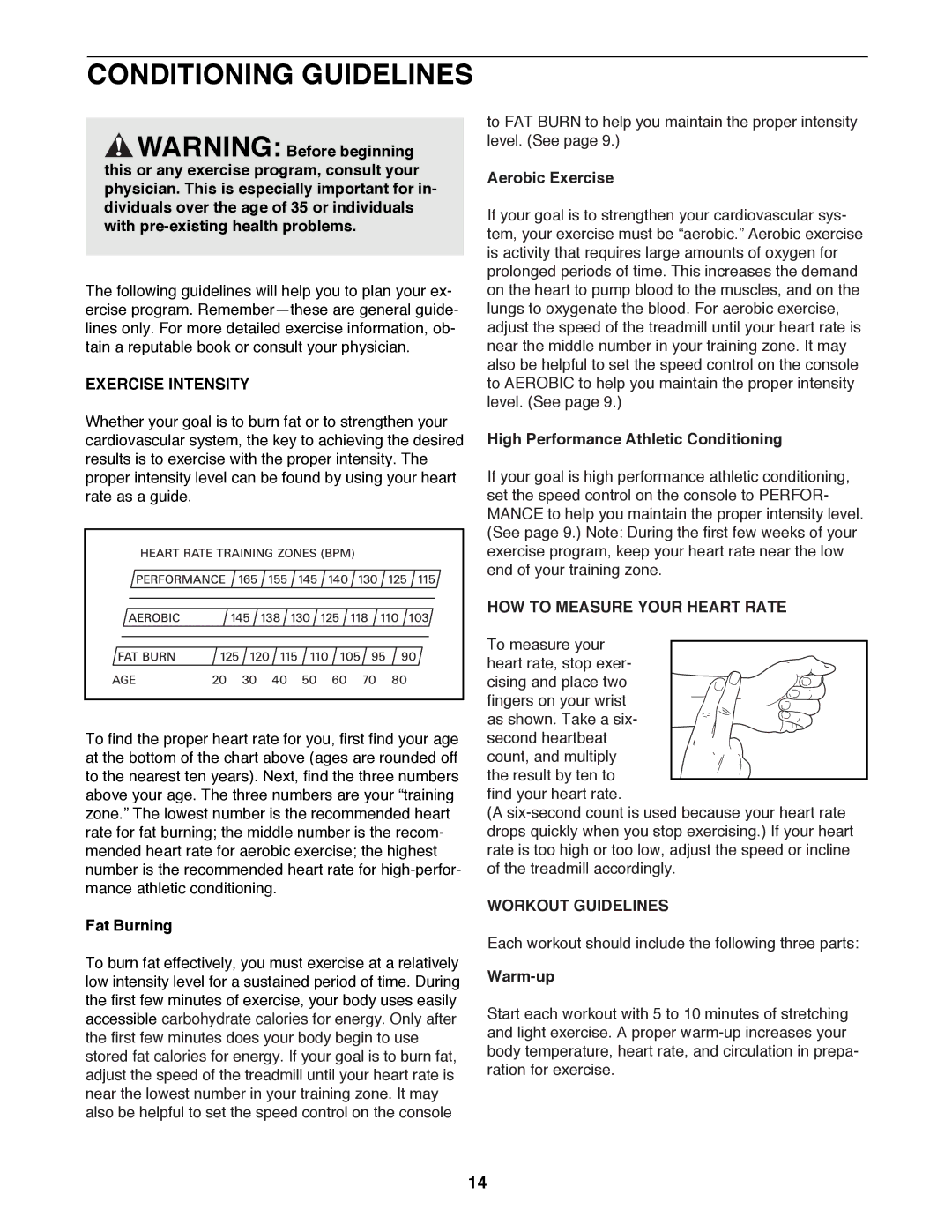
CONDITIONING GUIDELINES
![]() WARNING: Before beginning this or any exercise program, consult your physician. This is especially important for in- dividuals over the age of 35 or individuals with
WARNING: Before beginning this or any exercise program, consult your physician. This is especially important for in- dividuals over the age of 35 or individuals with
The following guidelines will help you to plan your ex- ercise program. RememberÑthese are general guide- lines only. For more detailed exercise information, ob- tain a reputable book or consult your physician.
EXERCISE INTENSITY
Whether your goal is to burn fat or to strengthen your cardiovascular system, the key to achieving the desired results is to exercise with the proper intensity. The proper intensity level can be found by using your heart rate as a guide.
To find the proper heart rate for you, first find your age at the bottom of the chart above (ages are rounded off to the nearest ten years). Next, find the three numbers above your age. The three numbers are your Òtraining zone.Ó The lowest number is the recommended heart rate for fat burning; the middle number is the recom- mended heart rate for aerobic exercise; the highest number is the recommended heart rate for
Fat Burning
To burn fat effectively, you must exercise at a relatively low intensity level for a sustained period of time. During the first few minutes of exercise, your body uses easily accessible carbohydrate calories for energy. Only after the first few minutes does your body begin to use stored fat calories for energy. If your goal is to burn fat, adjust the speed of the treadmill until your heart rate is near the lowest number in your training zone. It may also be helpful to set the speed control on the console
to FAT BURN to help you maintain the proper intensity level. (See page 9.)
Aerobic Exercise
If your goal is to strengthen your cardiovascular sys- tem, your exercise must be Òaerobic.Ó Aerobic exercise is activity that requires large amounts of oxygen for prolonged periods of time. This increases the demand on the heart to pump blood to the muscles, and on the lungs to oxygenate the blood. For aerobic exercise, adjust the speed of the treadmill until your heart rate is near the middle number in your training zone. It may also be helpful to set the speed control on the console to AEROBIC to help you maintain the proper intensity level. (See page 9.)
High Performance Athletic Conditioning
If your goal is high performance athletic conditioning, set the speed control on the console to PERFOR- MANCE to help you maintain the proper intensity level. (See page 9.) Note: During the first few weeks of your exercise program, keep your heart rate near the low end of your training zone.
HOW TO MEASURE YOUR HEART RATE
To measure your heart rate, stop exer-
cising and place two fingers on your wrist
as shown. Take a six- second heartbeat count, and multiply the result by ten to find your heart rate.
(A
WORKOUT GUIDELINES
Each workout should include the following three parts:
Warm-up
Start each workout with 5 to 10 minutes of stretching and light exercise. A proper
14
